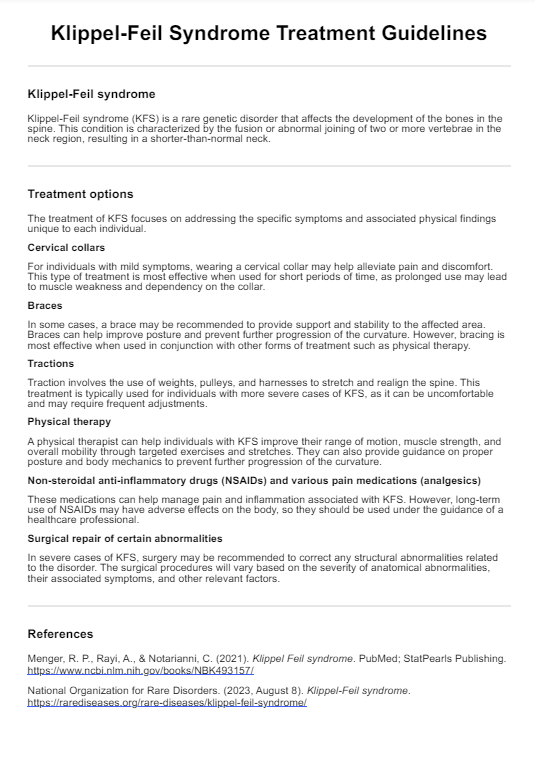Life expectancy for individuals with Klippel-Feil syndrome varies depending on the severity of associated complications, such as spinal cord compression or neurological deficits. With proper management and regular monitoring, many individuals with KFS can lead fulfilling lives and have a normal life expectancy.

Klippel-Feil Syndrome Treatment Guidelines
Learn about the treatment guidelines and get Carepatron's free PDF download example for Klippel-Feil syndrome (KFS) to enhance your understanding and management of this condition.
Klippel-Feil Syndrome Treatment Guidelines Template
Commonly asked questions
Klippel-Feil syndrome can result in significant physical limitations and functional impairments, potentially qualifying individuals for disability benefits based on their specific circumstances. However, disability eligibility is determined on a case-by-case basis, considering factors such as the severity of symptoms and their impact on daily activities.
Familial Klippel-Feil syndrome (KFS( is possible, with mutations in certain genes contributing to the development of the condition. While KFS can be inherited in an autosomal dominant or recessive manner in some cases, many instances occur sporadically without a family history of the condition.
EHR and practice management software
Get started for free
*No credit card required
Free
$0/usd
Unlimited clients
Telehealth
1GB of storage
Client portal text
Automated billing and online payments











